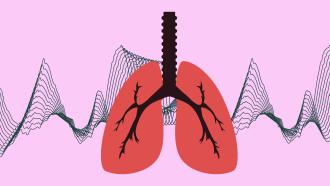
In a new study, researchers from the Indian Institute of Technology, Kharagpur and the Institute of Pulmocare and Research, Kolkata, have developed a new, efficient method to detect asthma—by listening to the sound made by the lungs of the patients. Their findings were published in the journal Computer Methods and Programs in Biomedicine.
Asthma is a lung disease that causes inflammation and narrowing of the airways, leading to severe difficulty in breathing. Associated symptoms include wheezing or a whistling sound while breathing, shortness of breath, chest tightness and cough. According to a recent report, 339 million people across the globe have asthma, and about 1000 people lose their lives every day to this disease. Diagnosing the disease early and treating it can help individuals manage the symptoms without affecting the quality of their life.
Doctors rely on the sound made by our lungs during creating to find out how our lungs are doing. Remember the times your doctor asked you to breathe well and put her stethoscope on your chest? Any abnormality in such sounds could help detect conditions like asthma. However, such methods rely on the presence of the wheezing sound while breathing.
“Usefulness of wheeze detection methods are limited as wheezes can be heard in several diseases other than asthma, and wheeze is not always present during active asthma”, point out the researchers of the current study.
In this study, the researchers captured the lung sounds of 30 asthmatic and 30 healthy individuals. Sounds were simultaneously recorded from four different positions on the posterior chest, using stethoscopes attached to a microphone. This set-up amplified the sound, removed the noise, and converted the sound signals into digital signals for further analyses. Although most available sensors that detect lung sounds do so from one position, capturing it simultaneously from all over the lungs provides an accurate diagnosis of the disease, say the researchers.
The present study describes the role of collecting lung sounds from different parts of the chest and their combination in detecting asthma.
“The proposed multichannel asthma detection method, where the presence of wheeze in lung sound is not a necessary requirement, outperforms commonly used lung sound classification methods in this field and provides significant relative improvement”, conclude the researchers.






